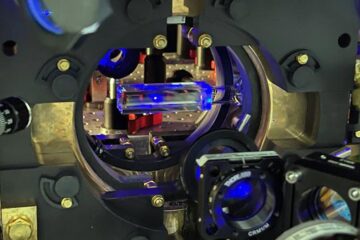Latest News

American Thoraic Society Journal news tips for May 2003 (first issue)
MENOPAUSAL WOMEN WITH DAYTIME SLEEPINESS SHOULD BE EVALUATED
Evaluation for sleep-disordered breathing should be a priority for menopausal women with complaints of snoring, daytime sleepiness, or unsatisfactory sleep. Researchers studied a population-based sample of 589 women enrolled in the Wisconsin Sleep Cohort Study. They tested the hypothesis that menopause is an independent risk factor for sleep-disordered breathing (SDB) using in-laboratory sleep testing (polysomnography). (SDB is a

Is body mass index a risk factor for road traffic injuries
Drivers who are overweight or underweight are at greater risk of suffering an injury in a road accident than people of average size, according to a study of deaths and injuries from motor vehicle accidents in New Zealand.
The study appears in the current issue of the International Journal of Epidemiology (IJE), edited in the Department of Social Medicine at the University of Bristol.
Dr Gary Whitlock and colleagues studied people who had been seriously injured or killed betwe

A new method for the design and manufacture of sensors based on optic fibres
A novel method for the design and manufacture of sensors to measure the temperature and relative humidity of the air, the pH of solutions or the refractive index of liquids based on optic fibre has been devised at the Public University of Navarre.
The sensors are small devices capable of capturing both physical and chemical signals from the surrounding environment and converting them into electrical signals for their subsequent processing. The information thus transformed can be easi

Women with breast cancer five times as likely to have pesticide (DDT) residues in their blood
Women with breast cancer are five times as likely to have pesticide residues in their blood of organochlorines (DDT), which contain oestrogens, reveals a study of 159 women in Occupational and Environmental Medicine.
The possibility of such a link has attracted controversy, admit the authors, but say that their new study adds to the growing body of evidence for an association between environmental oestrogens and the rising incidence of breast cancer.
The authors base their findings

Checking how cells grow
New research dismisses a widely held assumption about how cells grow
Research published today in Journal of Biology challenges an assumption about cell growth that underpins modern cellular biology. Ian Conlon and Martin Raff, of University College London, show that mammalian cells do not regulate their size in the way scientists have assumed they do since the 1970s.
Conlon and Raff conducted a series of experiments, using Schwann cells from the sciatic nerve of rats, to establish

NASA satellite measures Earth’s carbon metabolism
In honor of the Earth Day celebration, NASA scientists unveiled the first consistent and continuous global measurements of Earth’s “metabolism.” Data from the Terra and Aqua satellites are helping scientists frequently update maps of the rate at which plant life on Earth is absorbing carbon out of the atmosphere.
Combining space-based measurements of a range of plant properties collected by the Moderate Resolution Imaging Spectroradiometer (MODIS) with a suite of other satellite and su











